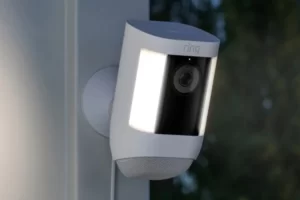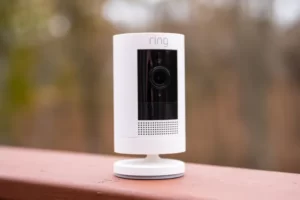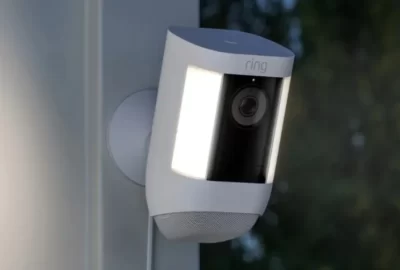Mirrorless Vs DSLR Cameras: Which One is Better?
People frequently favor DSLR or mirrorless cameras over other types of cameras when it comes to taking high-quality pictures. This guide to mirrorless vs DSLR cameras will assist you in making your decision.
As you might imagine from the name, the biggest difference between a mirrorless camera and a DSLR is the lack of a mirror inside the former.
Keep reading, we will compare these two types of cameras from different aspects.
What is a Mirrorless Camera?
So what is a mirrorless camera exactly?
The absence of a mirror in a mirrorless camera makes it impossible to view the image through the viewfinder naturally (more on that later).
But the more straightforward, streamlined design also enables a significantly more compact and portable device.
Related Reading: How to Use a Mirrorless Camera?
What is a DSLR Camera?
Digital Single-Lens Reflex, or DSLR. It’s the digital version of a film SLR camera, meaning it uses a digital imaging sensor instead of photographic film to capture images.
Through the lens, light enters the camera, where it bounces off a mirror in the camera body and into the viewfinder.
When you press the shutter, the mirror lowers to reveal the digital sensor, which is then exposed to the light and takes the photo.
Mirrorless Vs DSLR Camera Comparison
To fully compare mirrorless vs DSLR cameras, let’s take a look at how they differ when it comes to the most important camera specs and features:
Autofocus
The key difference here is that mirrorless cameras use a single autofocus system for both rear screen and viewfinder shooting, whereas Contrary to popular belief, DSLRs require the use of two.
DSLRs have special “phase detect” autofocus sensors built into the base of the camera, behind the mirror. The mirror flips up and out of the way when you take a picture, which eliminates the AF sensor from the picture.
Back when DSLRs didn’t have live view, this wasn’t a problem. But DSLRs had to switch to autofocus systems that used the image formed on the sensor itself as demand increased for live view shooting using the rear screen.
Therefore, you have a situation that still exists today: DSLRs have two autofocus systems, one for the viewfinder and the other for shooting in live view.
Mirrorless cameras have largely caught up to DSLRs in terms of autofocus speed, and they outperform them in terms of frame coverage and tracking capabilities.
Size & Weight

Size and weight are always important when it comes to cameras. The more portable the camera, the better, as you’ll most likely be using them in situations where you’ll need to move around.
One of the main selling points of a mirrorless camera over a DSLR is its portability and significantly lighter body weight. However, since most mirrorless lenses weigh roughly the same as DSLR lenses, the bigger and heavier of the two cameras would likely be the better choice if you frequently use bulky lenses. This is because it would be much harder to balance a lightweight camera and a heavy lens.
DSLR cameras are typically bigger and heavier than their mirrorless counterparts as they need fit a mirror and its housing, a pentaprism, and a secondary autofocus mirror as well as other parts of the autofocus system. However, some APS-C DSLR cameras may also be portable.
Lenses
Since DSLRs have been veterans on the market for the longest time, it’s a given that they have a wider selection of lenses that you can choose from. For now, a DSLR is the better option if having a larger selection of lenses is important to you.
However, the lens selection for mirrorless cameras is now gradually catching up as the popularity of these cameras grows.
Related Reading: Do DSLR Lenses Work on Mirrorless Cameras?
Battery Life

Mirrorless continues to fall short here, which can be a big negative for photographers shooting in the field for long stretches. S
maller mirrorless camera bodies equal smaller batteries, and mirrorless camera sensors are perpetually active, which can drain battery life in a jiffy. Extra batteries aren’t expensive, but it’s an added inconvenience all the same.
Viewfinder
Viewfinder superiority partially comes down to personal preference between the two systems. With a DSLR, the viewfinder image represents the actual image being captured by the lens.
The mirror within the DSLR reflects the image up to the viewfinder. Since the mirrorless system lacks that mirror, as you might have guessed, the viewfinder image is generated electronically.
This mirrorless viewfinder system has the benefit of reflecting the image while taking into account the shutter speed, ISO, white balance, and other in-camera settings, despite the fact that it is not a particularly straightforward process.
Image Quality
Both DSLRs and mirrorless cameras are capable of fantastic image quality, partially because either design is capable of using the latest and greatest full-frame sensors on the market. After all, the primary determinant of image quality is sensor size.
While things like autofocus, low-light shooting, and camera resolution will all factor into how good the final image is, neither camera has an edge over the other. If you were to compare image quality between two evenly matched DSLR and mirrorless cameras in a controlled environment, you will see that they are about the same.
Video Quality
Nowadays, all cameras have the ability to record video, but the difference between the two cameras’ ability to produce high-quality video will ultimately determine which one wins.
Despite the wide variety of lenses available for DSLRs, only high-end DSLR models are capable of producing 4K or Ultra HD videos. Mirrorless cameras have an advantage in this situation because they have the capacity to produce images of such quality even with some affordable models.
Price
Cameras require a significant financial commitment. The DSLR is the clear winner in terms of value for money. You can purchase an entry-level to mid-level DSLR camera at an affordable price and still get good specs and an array of features. Anything at the lower end of the price range for mirrorless cameras will have poor resolution, short battery life, and no viewfinder.
On the more professional, higher end of the spectrum, however, DSLR and mirrorless cameras are evenly matched. You get the same amount of features and roughly the same power and performance with either a mirrorless or DSLR, and the price range will largely be the same.
Conclusion on Mirrorless Vs DSLR
DSLR and mirrorless cameras are two different beasts with their own strengths and weaknesses. Due to the optical viewfinder, the DSLR offers a larger variety of interchangeable lenses, a longer battery life, and better low-light shooting.
On the other hand, mirrorless cameras can capture more images at faster shutter speeds, are lighter and more portable, and offer better video quality even in entry-level models.
The ability of today’s mirrorless and DSLR cameras to produce never-before-seen image quality with stunning performance and convenience serves as a testament to how far digital camera technology has come.
Although today’s photographers may favor DSLRs, who can say what preferences of tomorrow’s photographers will be given the speed at which photographic technology is developing.
FAQs
Is a Mirrorless Camera Better Than a DSLR?
A DSLR is for you if you require a camera body with quick and reliable autofocus, an optical viewfinder, and don’t mind the size.
Do Photographers Use DSLR Or Mirrorless?
For professional photographers, mirrorless cameras are more popular than DSLR cameras.
What is the Advantage of a Mirrorless Camera?
Mirrorless cameras offer more image stabilization.







